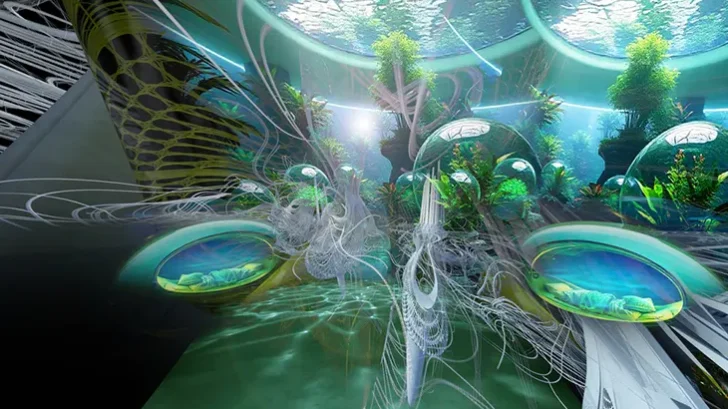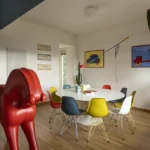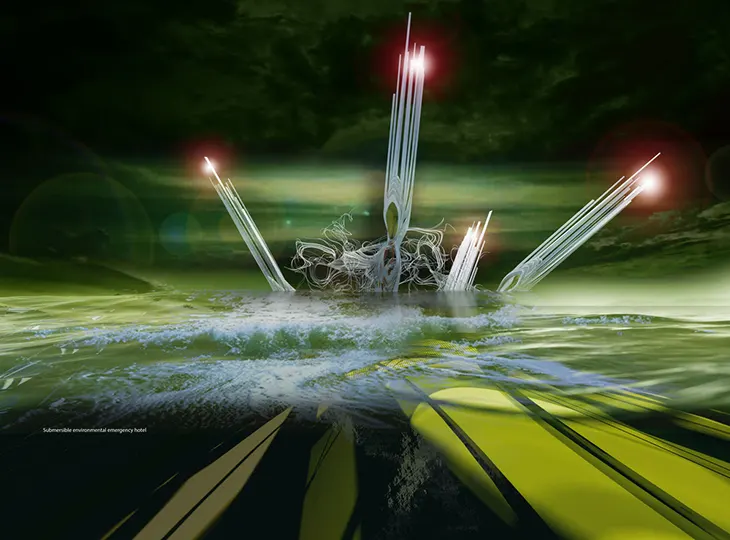
Margot Krasojević Architecture introduces a speculative hospitality concept built for a future shaped by rising seas and environmental volatility. The Tsunami Submersible Emergency Hotel, located in the Pacific Ocean, proposes a new typology of ocean-based living, one that embraces submersion as both refuge and function.
HOTELS
Positioned 50 miles off Taiwan’s coast and 150 miles from mainland China’s volcanic arc, the hotel draws from marine engineering, incorporating elements found in pontoons, submarines, and oil rigs. The structure consists of three vertically oriented units tethered to the seabed. Each can retract and descend beneath the water’s surface in the event of a tsunami, utilizing deflatable facade jackets, ballast tanks, and pressurized chambers. Once submerged, the hotel becomes part of the ocean’s movement, relying on depth to offset the destructive amplitude of approaching waves.
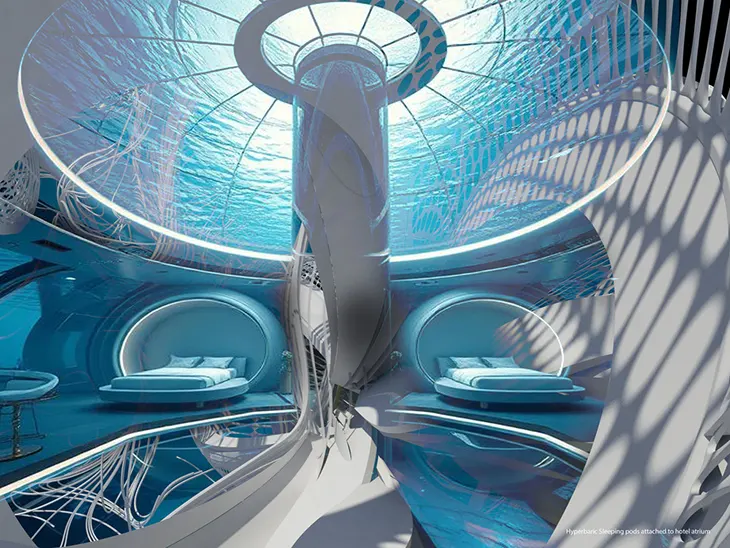
The hotel’s form mirrors both biological and industrial precedents. Sleeping humpback whales inspired the orientation of ballast chambers, while tension-leg platforms and fiber-optic photonic wind turbines add technological depth. These masts, acting like the limbs of a deep-sea creature, support energy systems that collect environmental data in real time to optimize wind energy and balance buoyancy. The design also prioritizes pressure regulation: each guest room contains a hyperbaric chamber for atmospheric adjustment.
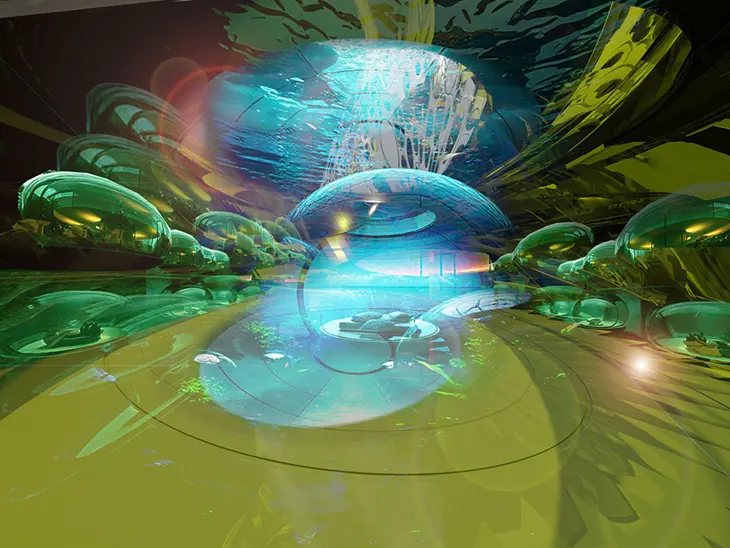
Architecturally, the hotel wraps its inhabitable pods in inflatable marine salvage materials. These modular pods remain structurally intact while submerged, and help resurface the unit once ocean conditions stabilize. At the surface, the structure functions like a fixed-floating cruise experience, bobbing with wave patterns while remaining anchored for stability.
Beyond leisure, the concept underscores architecture’s potential response to crisis. As hyper-tourism and climate emergencies reshape how and where we build, Krasojević’s design suggests offshore, submerged habitats as viable alternatives for both living and escape, a provocative intersection of sustainability, adaptability, and engineered survival.
